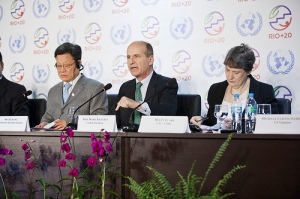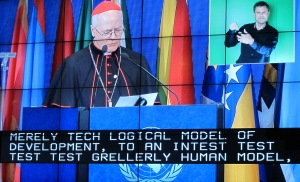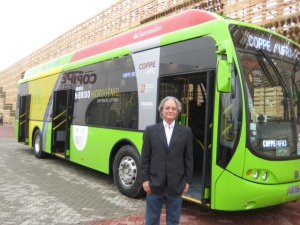T. V. Padma
South Asia regional coordinator, SciDev.Net
Hello, and I pitch in to wrap up our blog.
Sustainable development is a multi-dimensional, complex topic that is, and should be, viewed through a variety of lenses, but it is often impossible to have all the lenses with us, even if we want to.
During Rio+20, SciDev.Net looked at it through the science lens, offering a rich fare of issues from energy for all, to oceans, to agriculture to technology transfer and the role of science in sustainable development.

Sha Zukang: Everyone is equally unhappy which means that everyone is equally happy…
Flickr/UN Photo / Jean-Marc Ferra
That coverage was peppered with a view of the scenes outside the conference venue, including exhibitions and the bustling people’s summit (see earlier entries in this blog).
The conference secretary general, Sha Zukang, says the summit achieved some notables: including a “substantive pathbreaking outcome”; a registry of voluntary commitments from corporates, international agencies and others for sustainable development; and the ‘zero hunger challenge’ initiative.
“We would have been happier if there had been more science in the document. But the outcome document is something we can build on,” Rajendra Pachauri, chair of the Inter Governmental Panel on Climate Change, remarked to me.
Civil society was predictably furious over what Greenpeace’s Kumi Naidoo described as a “missed historical opportunity” to see a stronger agenda through.
Many of us living in developing countries, including me, recognise the complexity of sustainable development — the sheer magnitude of poverty in some areas; the inequity within countries that has worsened as economies grow and the never-ending ‘environment versus development’ tension as we struggle to lift millions out of poverty and provide access to clean water, sanitation, energy, education and jobs.
I would like to mention two lasting impressions as I sometimes switched the science lens for other lenses.
I, like countless women, am left aghast that this summit has regressed on women’s reproductive health and rights issues which has implications for access to safe contraception and family planning services. It is Rio minus 20 on that count.
Then I am left uneasy with this corporate juggernaut — it was there with all its public relations machinery.
Jose Maria Figueres, president of the nongovernmental organisation Carbon War Room, told the media that, while governments let Rio+20 down, corporates took it forward. Time to watch out for who will be in the driving seat from now on.
But then as Sha Zukang philosophically noted, such meetings leave “everyone equally unhappy … equally unhappy means equally happy,” he observed. So be it.
This blog post is part of our Forum on Science, Technology and Innovation for Sustainable Development blog which takes place 11-15 June 2012. To read news and analysis from the conference please visit our website.




 Posted by scidevnet
Posted by scidevnet 







![IMG_6731[1]](https://scidevnet.files.wordpress.com/2012/06/img_673111.jpg?w=225&h=300)







You must be logged in to post a comment.